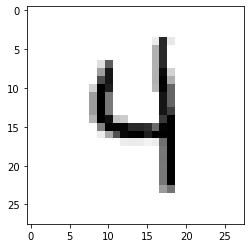Pytorch入门实战(2)-使用BP神经网络实现MNIST手写数字识别
上一篇:Pytorch入门实战(1) - 实现线性回归
涉及知识点
Pytorch nn.Module的基本使用
Pytorch nn.Linear的基本用法
PytorchVision Transforms的基本使用
Pytorch中DataLoader的基本用法
Pytorch详解NLLLoss和CrossEntropyLoss
如何确定神经网络的层数和隐藏层神经元数量
本文内容
本文将会使用BP神经网络(就是最普通的神经网络)实现一个MNIST手写数据集的实现。话不多说,直接开始。
首先先导入需要的包:
import os
import numpy as np
import torch
import torchvision
import matplotlib.pyplot as plt
from time import time
from torchvision import datasets, transforms
from torch import nn, optim
定义transform对象,其定义了数据集中的图片应该做怎样的处理:
transform = transforms.Compose([transforms.ToTensor(),
transforms.Normalize((0.5,), (0.5,)),])
加载和下载训练数据集,这里使用pytorch提供的API进行下载:
train_set = datasets.MNIST('train_set', # 下载到该文件夹下
download=not os.path.exists('train_set'), # 是否下载,如果下载过,则不重复下载
train=True, # 是否为训练集
transform=transform # 要对图片做的transform
)
train_set
Dataset MNIST
Number of datapoints: 60000
Root location: train_set
Split: Train
StandardTransform
Transform: Compose(
ToTensor()
Normalize(mean=(0.5,), std=(0.5,))
)
等待一段时间下载成功后,可以看到训练集中一共有6w个数据,接下来下载测试数据集:
test_set = datasets.MNIST('test_set',
download=not os.path.exists('test_set'),
train=False,
transform=transform
)
test_set
Dataset MNIST
Number of datapoints: 10000
Root location: test_set
Split: Test
StandardTransform
Transform: Compose(
ToTensor()
Normalize(mean=(0.5,), std=(0.5,))
)
测试数据集包含1w条数据
接下来构建训练数据集和测试数据集的DataLoader对象:
train_loader = torch.utils.data.DataLoader(train_set, batch_size=64, shuffle=True)
test_loader = torch.utils.data.DataLoader(test_set, batch_size=64, shuffle=True)
dataiter = iter(trainloader)
images, labels = dataiter.next()
print(images.shape)
print(labels.shape)
torch.Size([64, 1, 28, 28])
torch.Size([64])
在上面,我们将其分成64个一组的图片,每个图片只有一个通道(灰度图),大小为28x28。抽一张绘制一下:
plt.imshow(images[0].numpy().squeeze(), cmap='gray_r');
到这里,前期准备工作就结束了。
开始定义神经网络
class NerualNetwork(nn.Module):
def __init__(self):
super().__init__()
"""
定义第一个线性层,
输入为图片(28x28),
输出为第一个隐层的输入,大小为128。
"""
self.linear1 = nn.Linear(28 * 28, 128)
# 在第一个隐层使用ReLU激活函数
self.relu1 = nn.ReLU()
"""
定义第二个线性层,
输入是第一个隐层的输出,
输出为第二个隐层的输入,大小为64。
"""
self.linear2 = nn.Linear(128, 64)
# 在第二个隐层使用ReLU激活函数
self.relu2 = nn.ReLU()
"""
定义第三个线性层,
输入是第二个隐层的输出,
输出为输出层,大小为10
"""
self.linear3 = nn.Linear(64, 10)
# 最终的输出经过softmax进行归一化
self.softmax = nn.LogSoftmax(dim=1)
# 上述动作可以直接使用nn.Sequential写成如下形式:
self.model = nn.Sequential(nn.Linear(28 * 28, 128),
nn.ReLU(),
nn.Linear(128, 64),
nn.ReLU(),
nn.Linear(64, 10),
nn.LogSoftmax(dim=1)
)
def forward(self, x):
"""
定义神经网络的前向传播
x: 图片数据, shape为(64, 1, 28, 28)
"""
# 首先将x的shape转为(64, 784)
x = x.view(x.shape[0], -1)
# 接下来进行前向传播
x = self.linear1(x)
x = self.relu1(x)
x = self.linear2(x)
x = self.relu2(x)
x = self.linear3(x)
x = self.softmax(x)
# 上述一串,可以直接使用 x = self.model(x) 代替。
return x
model = NerualNetwork()
神经网络定义完后,开始定义损失函数,这里选用负对数似然损失函数(NLLLoss, negative log likelihood loss),其常用于分类任务。详情可参考链接
criterion = nn.NLLLoss()
接下来定义优化器,这里使用随机梯度下降法,学习率设置为0.003,momentum取默认的0.9(用于防止过拟合)
optimizer = optim.SGD(model.parameters(), lr=0.003, momentum=0.9)
准备工作完毕,开始训练数据集:
time0 = time() # 记录下当前时间
epochs = 15 # 一共训练15轮
for e in range(epochs):
running_loss = 0 # 本轮的损失值
for images, labels in train_loader:
# 前向传播获取预测值
output = model(images)
# 计算损失
loss = criterion(output, labels)
# 进行反向传播
loss.backward()
# 更新权重
optimizer.step()
# 清空梯度
optimizer.zero_grad()
# 累加损失
running_loss += loss.item()
else:
# 一轮循环结束后打印本轮的损失函数
print("Epoch {} - Training loss: {}".format(e, running_loss/len(trainloader)))
# 打印总的训练时间
print("\nTraining Time (in minutes) =",(time()-time0)/60)
Epoch 0 - Training loss: 0.6462286284117937
Epoch 1 - Training loss: 0.27847810615418056
Epoch 2 - Training loss: 0.21768317640081905
Epoch 3 - Training loss: 0.17949896098088736
Epoch 4 - Training loss: 0.1514430489978874
Epoch 5 - Training loss: 0.12892813527329103
Epoch 6 - Training loss: 0.11302738852882341
Epoch 7 - Training loss: 0.09980541475113235
Epoch 8 - Training loss: 0.08899609394905679
Epoch 9 - Training loss: 0.0805584444001174
Epoch 10 - Training loss: 0.07290568387211323
Epoch 11 - Training loss: 0.06743549962075296
Epoch 12 - Training loss: 0.06314737589380491
Epoch 13 - Training loss: 0.056689855163551565
Epoch 14 - Training loss: 0.05361823974547586
Training Time (in minutes) = 2.9436919848124186
最终在我这台机器上,花费了2分多钟完成了训练。可以看到,损失是越来越小的。
接下来进行模型的评估
correct_count, all_count = 0, 0
model.eval() # 将模型设置为评估模式
# 从test_loader中一批一批加载图片
for images,labels in test_loader:
# 循环检测这一批图片
for i in range(len(labels)):
logps = model(images[i]) # 进行前向传播,获取预测值
probab = list(logps.detach().numpy()[0]) # 将预测结果转为概率列表。[0]是取第一张照片的10个数字的概率列表(因为一次只预测一张照片)
pred_label = probab.index(max(probab)) # 取最大的index作为预测结果
true_label = labels.numpy()[i]
if(true_label == pred_label): # 判断是否预测正确
correct_count += 1
all_count += 1
print("Number Of Images Tested =", all_count)
print("\nModel Accuracy =", (correct_count/all_count))
Number Of Images Tested = 10000
Model Accuracy = 0.9741
最终,本次训练在测试数据集上的精准率为97.41%
参考资料
Handwritten Digit Recognition Using PyTorch — Intro To Neural Networks: https://towardsdatascience.com/handwritten-digit-mnist-pytorch-977b5338e627
